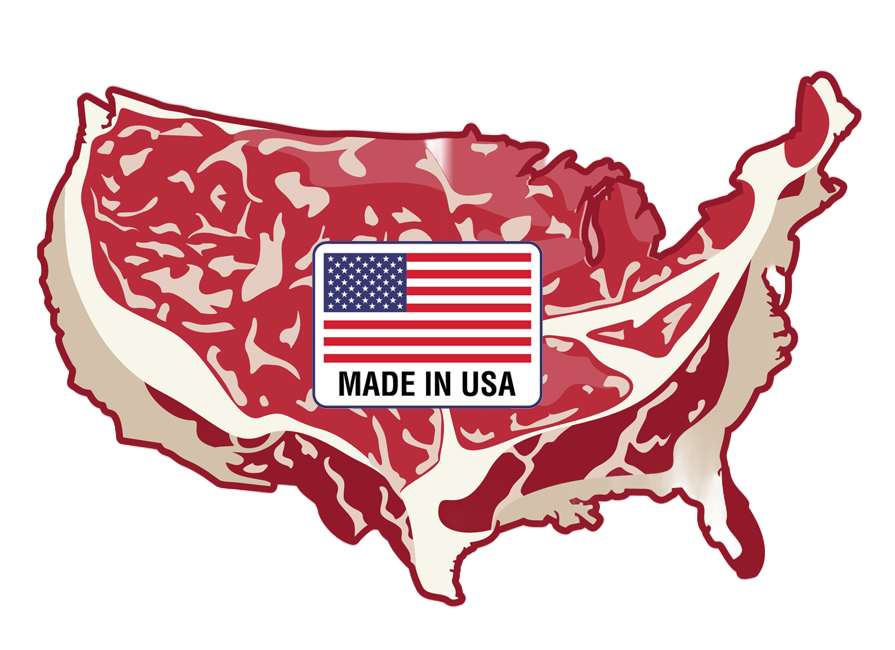In today's increasingly food-conscious world, consumers expect a label to mean what it says—including the…
Is the FDA Guidance on Farm Animal Antibiotics Meaningful or Meaningless?
 On June 28, the Food and Drug Administration (FDA) issued a draft Guidance to Industry document for the use of antibiotics in farm animals. It’s the first time in over 30 years the FDA—the agency charged with regulating drugs in the U.S.—appears to be taking steps to limit the use of important antibiotics in food animal production.
On June 28, the Food and Drug Administration (FDA) issued a draft Guidance to Industry document for the use of antibiotics in farm animals. It’s the first time in over 30 years the FDA—the agency charged with regulating drugs in the U.S.—appears to be taking steps to limit the use of important antibiotics in food animal production.
Good news? Sadly, the draft guidance contains only two recommendations, both so weakly worded they would allow the agricultural industry to carry on just as it is has. Even more distressing, once the document is finalized, it only represents the FDA’s current thinking on the topic; it doesn’t carry any regulatory power whatsoever.
In what appears to be a saving grace, the guidance summarizes many reports dating back to 1968 showing the link between antibiotic use and antibiotic resistance. In fact the best part of 10 of the 19 pages is used to demonstrate this very point. In fact the FDA press release announcing the release of this guidance states “that the overall weight of evidence available to date supports the conclusion that using medically important antimicrobial drugs for production or growth enhancing purposes (i.e., non-therapeutic or sub-therapeutic uses) in food-producing animals is not in the interest of protecting and promoting the public health.”
However, the rest of the world has already acknowledged this link and has acted to reduce the very real risk of indiscriminate antibiotic use in the livestock industry. In the U.S. we have listened to Big Ag, allowed the powerful agricultural and pharmaceutical lobbies to have their way, and continued to put tons of antibiotics into farm animal feed and water. There are estimates that as much as 70 percent of the antibiotics used in the U.S. are used to promote growth in farm animals, not to treat animals that are sick or ailing.
Dr. Joshua M. Sharfstein, the agency’s principal deputy commissioner, won’t say if the FDA will eventually move toward enforcement of antibiotic use in farm animals. Right now, they are just making “recommendations.”
So here is what the draft guidance doesn’t do:
- It doesn’t ban the profit driven use of antibiotics for growth promotion
- It doesn’t ban the use of antibiotics that are critical for human health
- It doesn’t control the indiscriminate feeding of antibiotics
- It doesn’t make control of the use of antibiotics mandatory
- It doesn’t require a diagnosis before or after any antibiotic is administered
Here is what it does do:
- It delays or avoids a critically important step in protecting human health—which is controlling the use of drugs that we need to treat our families and friends so we can live without fear of deadly, antibiotic resistant infections.
What we need is mandatory control of antibiotic use in food animal production. Any antibiotic treatment must be just that—a treatment for a particular health problem. Antibiotic use must be overseen and tightly regulated. If it isn’t we will continue to see increased drug-resistant and untreatable infections.
Animal Welfare Approved is not alone in its belief that this “action” by the FDA is totally inadequate. It’s a well-known fact that politicians, drug companies and Big Ag are very cozy, a point well illustrated by David Kirby’s recent piece in the Huffington Post. But, as the New York Times notes, the guidance could lay the groundwork for regulation. Since Rep. Louise Slaughter’s (D-NY28) bill, H.R. 1549, Preservation of Antibiotics for Medical Treatment Act, continues to languish in committee, the FDA is currently our best hope.
As Rep. Slaughter said her statement, released on June 28, “The FDA has proposed good steps, but they have not gone far enough or moved fast enough. We cannot wait any longer. Scientists and public health experts have known for many years that these drugs were being overused…”
We will be working alongside interested partners to garner as many comments as possible.
Submit your comments on the draft guidance (Docket ID FDA-2010-D-0094).
Submit written comments on the draft guidance to:
Division of Dockets Management (HFA–305)
Food and Drug Administration
5630 Fishers Lane, rm. 1061
Rockville, MD 20852.
The 60-day comment period is open until the end of August.



